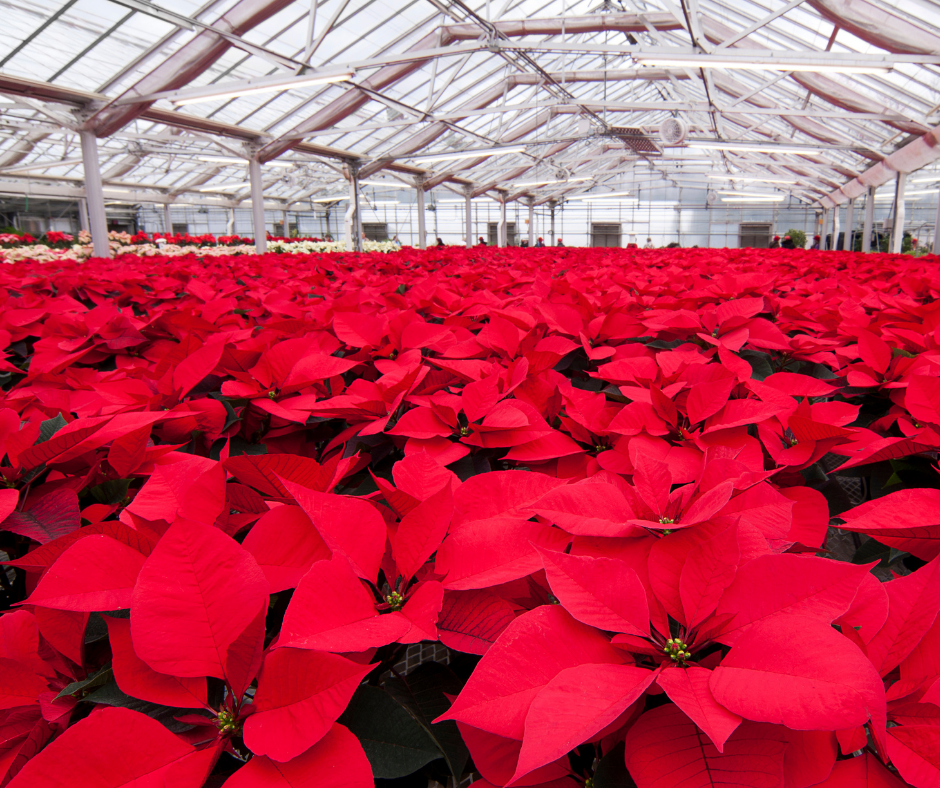Caring for Holiday Plants
go.ncsu.edu/readext?838838
en Español / em Português
El inglés es el idioma de control de esta página. En la medida en que haya algún conflicto entre la traducción al inglés y la traducción, el inglés prevalece.
Al hacer clic en el enlace de traducción se activa un servicio de traducción gratuito para convertir la página al español. Al igual que con cualquier traducción por Internet, la conversión no es sensible al contexto y puede que no traduzca el texto en su significado original. NC State Extension no garantiza la exactitud del texto traducido. Por favor, tenga en cuenta que algunas aplicaciones y/o servicios pueden no funcionar como se espera cuando se traducen.
Português
Inglês é o idioma de controle desta página. Na medida que haja algum conflito entre o texto original em Inglês e a tradução, o Inglês prevalece.
Ao clicar no link de tradução, um serviço gratuito de tradução será ativado para converter a página para o Português. Como em qualquer tradução pela internet, a conversão não é sensivel ao contexto e pode não ocorrer a tradução para o significado orginal. O serviço de Extensão da Carolina do Norte (NC State Extension) não garante a exatidão do texto traduzido. Por favor, observe que algumas funções ou serviços podem não funcionar como esperado após a tradução.
English
English is the controlling language of this page. To the extent there is any conflict between the English text and the translation, English controls.
Clicking on the translation link activates a free translation service to convert the page to Spanish. As with any Internet translation, the conversion is not context-sensitive and may not translate the text to its original meaning. NC State Extension does not guarantee the accuracy of the translated text. Please note that some applications and/or services may not function as expected when translated.
Collapse ▲The tradition of taking plants as gifts to friends and family is part of the holiday season. With modest effort you can keep these plants in tip-top shape for weeks to months.
 The Poinsettia is a native of Mexico, so it should not surprise us that it needs a little “helping hand” to ensure a longer, fuller life in our indoor environments and colder climate. Place poinsettias in your home in bright light (but not direct sun). Ideally, your home would be 70°F during the day, and the temperature would be lowered to 60°F at night. Do not let the plant completely dry out. Water when the soil surface feels slightly dry, water with 1-2 cups of tepid water, but do not allow water to accumulate in the tray below the plant or inside the foil wrapper. Wait five minutes after watering and then empty any excess water that remains.
The Poinsettia is a native of Mexico, so it should not surprise us that it needs a little “helping hand” to ensure a longer, fuller life in our indoor environments and colder climate. Place poinsettias in your home in bright light (but not direct sun). Ideally, your home would be 70°F during the day, and the temperature would be lowered to 60°F at night. Do not let the plant completely dry out. Water when the soil surface feels slightly dry, water with 1-2 cups of tepid water, but do not allow water to accumulate in the tray below the plant or inside the foil wrapper. Wait five minutes after watering and then empty any excess water that remains.
Amaryllis is the real do-it-yourself plant of the season. Available in red, white, variegated, single and double flowered forms, the amaryllis is available already budded and blooming or as a dormant bulb that you plant-and-grow in the pot. A cooler room with bright light will yield a shorter, more compact plant. As with most plants grown indoors, excessively warm indoor temperatures will shorten the flowering life of the amaryllis.
Christmas cacti require relatively little care to maintain their luster and bloom. The blossoms of Christmas cacti will retain their color and last longest if kept in a moderately cool room (~60-68°F) in bright light. These plants though called cactus are not, so you will need to water about once a week when the top half of the soil becomes dry. If the plant becomes too dry, it will drop its flower buds.
Cyclamen have some of the most attractive flowers and foliage of any of the “traditional” holiday plants. Their marbled foliage sets off the satiny sheen of red, pink and white blooms like few other garden or pot plants. Like other pot plants, over watering can cause yellowing and shorten plant life. Keep the pot slightly moist and fertilize with a complete, houseplant fertilizer at ¼ strength every other watering. Cool temperatures (50°F at night) and bright light are essential for an extended display of color.
Rosemary, ivy or myrtle topiaries; paperwhites, kalanchoe, and ornamental peppers expand the gift palette even further. For a personal introduction to the wonderful variety of potted plants available this holiday season visit your local nursery or greenhouse. Your family and friends will thank you for it.




